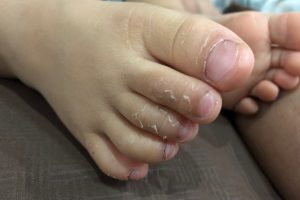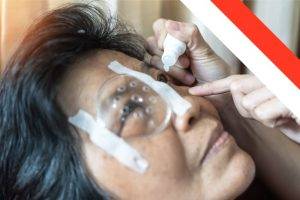The term ‘eating disorder’ brings to our mind problems related to food and eating. But an eating disorder is more than that. An eating disorder is a mental health condition in which unhealthy eating habits form. Eating disorders affect people all over the world. It is more prevalent among adolescents than in adults, although it can affect people of any age. Japan has the highest prevalence of eating disorders in Asia, followed by other countries like Hong Kong, Singapore, and Taiwan. Read on to find out about 5 common types of eating disorders.
PSA: Medical Channel Asia (MCA) is now on Telegram! Join us here for daily reads and the latest updates at your fingertips!
What Is An Eating Disorder?
An eating disorder is a mental health condition in which unhealthy eating habits form. It can start as an obsession with certain body shapes and sizes, which then translates into unhealthy eating, leading to serious health conditions. Eating disorders can affect people of any gender and at any life stage, though they tend to afflict more adolescents, and more females than males.
The most common symptom of an eating disorder is the restriction of food intake. Some can even take on forms like over-exercising and vomiting to purge the food from the body. This type of behaviour is mostly seen in adolescents and young women who want to maintain a certain body shape and size.
What Are The Causes Of Eating Disorders?
- Genetics: Genes present in certain individuals play an active role in developing an eating disorder. Sometimes, a change in brain chemicals can also cause an eating disorder.
- Psychological factors: Certain psychological factors like perfectionism, troubled relationships, and low self-esteem can cause eating disorders.
What Are The 5 Different Types Of Eating Disorders?
1. Anorexia Nervosa
This condition develops mostly in women in their adolescence. Individuals with anorexia may consider themselves overweight, though they may be underweight in reality; and constantly monitor their weight. These people closely monitor the food they eat and may avoid certain foods to keep their weight under control.
The common symptoms of anorexia nervosa are:
- Restricted eating.
- Underweight when compared to people of their age and size.
- Resorting to extreme behaviour that controls their weight.
- A heavy influence of body weight on their overall personality.
- Constant thought about the food that helps to keep their weight under control.
Some may even indulge in purging like vomiting or taking laxatives to get rid of the excess food in their bodies.
2. Bulimia Nervosa
Bulimia Nervosa is a type of eating disorder in which the person overeats to a stage where they are painfully full. The person may indulge in food they normally tend to avoid. Once they are full, they will try to purge to get rid of the excess food in the body. The purging behaviour can include vomiting, using laxatives, enemas, and over-exercising. In bulimia nervosa, individuals tend to maintain a relatively healthy weight instead of losing large amounts of weight.
The main symptoms of bulimia nervosa include:
- Overeating without any control.
- Purging behaviour to get rid of the excess food in the body.
- Fear of weight gain in spite of having a normal weight.
3. Binge eating
Those with binge eating disorders tend to binge eat without any control. They may eat a large amount of food in a short time and cannot control the urge to eat during binges. They do not attempt to purge to compensate, so they tend to gain a lot of weight. Eventually, they may develop other medical complications like diabetes and heart problems.
The main symptoms of binge eating include:
- Eating a large quantity of food even without feeling hungry.
- A lack of control over how much they eat.
- Feeling of shame when thinking about binge eating.
- No purging behaviour like vomiting or using laxatives.
4. Pica
Pica is another eating disorder in which the person craves non-food items like ice, chalk, cloth and paper. Though anyone can develop pica, it is most commonly found in children, pregnant women, and those with mental and intellectual disabilities. Their chances of developing an infection from consuming non-food items are very high.
5. Restrictive food intake disorder
People with restrictive food intake disorder have disturbed eating patterns. This can be due to distaste of taste, smell, or texture or a lack of interest in food. This normally develops during childhood and slowly develops into adulthood.
The main symptoms of this disorder are:
- Avoiding eating certain food items, resulting in insufficient intake of calories or nutrients.
- Loss of weight because of insufficient nutrition.
- Dependence on supplements to make up for the nutritional deficiency.
Who Are At Risk Of Developing Eating Disorder?
Eating disorders can affect anyone of any gender, age, ethnicity, and income level. Young women and teenage girls are more likely to develop eating disorders when compared to men of the same age. However, there are certain factors that can increase your risk of developing this condition.
- Having a close relative with an eating disorder or other mental health conditions.
- Personal history of anxiety disorder.
- Having been teased or bullied about one’s weight in the past.
- Stress in day-to-day life like relationship issues, or study or work-related issues.
- Having unhealthy perfectionism and poor body image.
What Are The Complications of Eating Disorder?
Eating disorders can lead to the below complications
- Anxiety and depression
- Nutritional deficiencies that may affect proper growth and development.
- Suicidal thoughts
- Social and relationship problems
- Work/School problems
- Other serious health problems to organ systems of the body
Conclusion
Eating disorders are as much a mental condition as they are physical illnesses. It can be damaging to the body if left untreated. Identifying eating disorders and getting treated is important to ensure that the person does not suffer from more health problems down the line. Seek help from a healthcare professional who specializes in eating disorders.
Did you find this article useful and informative? Do you have more questions regarding this topic, or any other topics related to medical and healthcare? Send your questions to [email protected] now!












